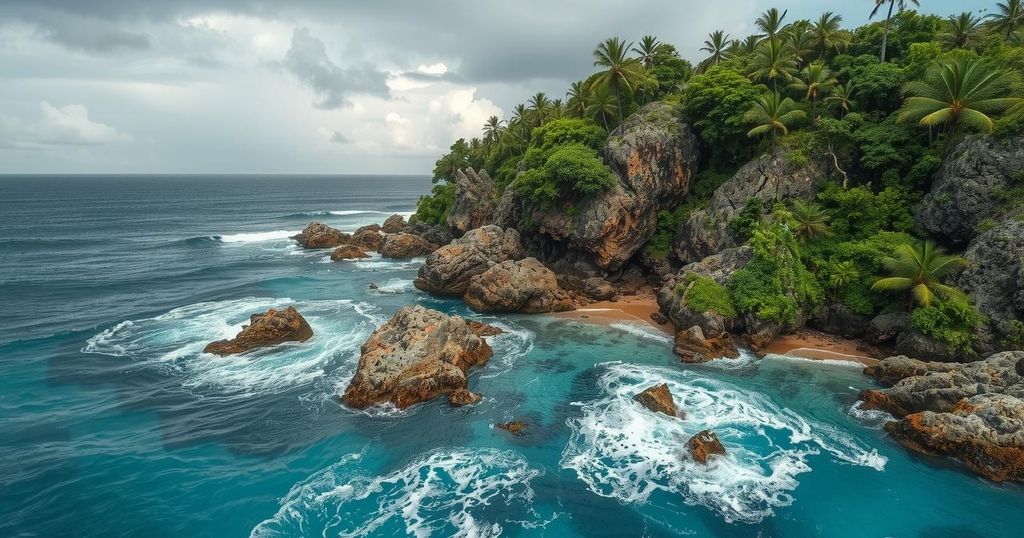Mayotte was struck by Tropical Storm Dikeledi just weeks after Cyclone Chido devastated the islands, causing casualties and destruction. Authorities warned of high flooding risks and mobilized emergency personnel while residents were advised to seek shelter. The situation highlights the ongoing vulnerabilities faced by Mayotte, a French territory grappling with significant socio-economic challenges exacerbated by frequent natural disasters.
Mayotte, a French territory located in the Indian Ocean, faced another devastating natural disaster as Tropical Storm Dikeledi struck on January 12, 2025. This storm came shortly after the region experienced one of the worst cyclones in nearly a century, Cyclone Chido, which resulted in significant destruction and loss of life. With a population of around 320,000, the islands were directed to seek shelter and stock up on essential supplies due to the anticipated heavy rains and strong winds.
The island is still reeling from the aftermath of Cyclone Chido, which made landfall on December 14, killing at least 39 individuals and leaving over 200 missing. Reports indicated that more than 5,000 residents sustained injuries. Dikeledi, which had previously struck Madagascar as a cyclone, was expected to bring severe weather conditions yet again. Authorities had issued a red alert due to the high risk of flooding and landslides, proving particularly concerning for the impoverished and densely populated region.
In response to the impending storm, the Mayotte Prefecture emphasized the ongoing dangers via social media alerts, stating, “The danger to the population persists.” In anticipation of increased casualties and destruction from Dikeledi, officials mobilized over 4,000 emergency personnel, with a focus on shantytowns around the capital, Mamoudzou. The international airport was closed indefinitely, and cyclone shelters were reopened to accommodate those in need.
Despite some areas initially spared from Cyclone Chido, reports emerged of complete devastation in the southern village of Mbouini due to Dikeledi’s impact. Residents were forced to evacuate their homes, seeking refuge as their community succumbed to rising floodwaters. The repeated devastation of Mayotte highlights significant infrastructure vulnerabilities and raises concerns over the French government’s response to the welfare of its citizens in the region, which many argue has been neglected.
The Archipelago of Mayotte is located off the east coast of Africa in the Indian Ocean. Although it is a French territory and part of the European Union, it is known as one of the poorest departments, grappling with significant socio-economic issues exacerbated by natural disasters. Cyclone Chido, the most impactful cyclone in nearly a century, has already showcased the severe impacts of tropical storms in this region, culminating in numerous casualties and widespread destruction. The region’s structural weaknesses are further compounded by informal settlements housing many undocumented migrants, leading to severe challenges in disaster response and recovery efforts. Tropical storms and cyclones are common during the November to April cyclone season, raising concerns regarding climate change and increasing storm frequency.
In summary, Mayotte is currently facing a grave crisis due to the dual impact of Cyclone Chido and Tropical Storm Dikeledi, which raises critical concerns about disaster preparedness and relief efforts in one of France’s most impoverished territories. The forced evacuations and continual threats of flooding and landslides lay bare the vulnerabilities of Mayotte’s infrastructure and the necessity for an effective response from the French government. Moreover, the cyclone season from November to April poses ongoing risks that demand urgent attention to enhance the resilience of the community against future cyclonic events.
Original Source: halifax.citynews.ca






